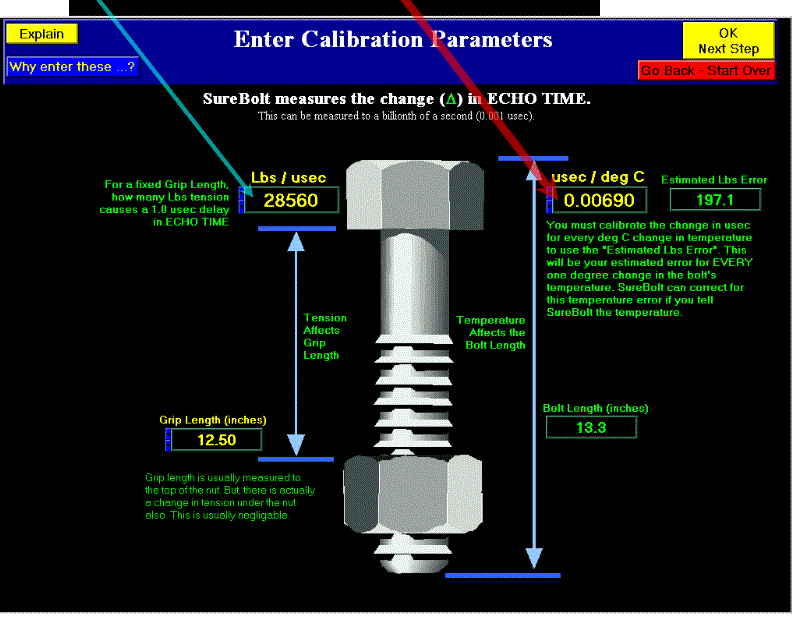 |
Enter Your Bolt's Ultrasonic
Stretch Coefficient AND Temperature Coefficient
|
|
|
Stretch & Temperature Coefficients: The manufacturer has already determined
these values for this type of bolt.
They experimentally measured a 0.100 usec delay when this type of bolt
(at this grip length) had 2856 lbs of tension. Then they calculated this
coefficient by dividing 2856 by 0.100 = 28560 Lbs / usec. They used
SureBolt to do this.
Manufacturer #2 also experimentally measured the
bolt's ultrasonic change due to temperature change. This was also
accomplished by using SureBolt and a standard temperature meter: Here are their
steps:
 |
They put this type of bolt into ice
water, waited, and recorded the echo when the bolt was at 0.0 deg C. They
entered this 0.0 deg C temperature on the SureBolt real-time screen.
|
 |
Then they put the bolt (without moving
the ultrasonic transducer for best accuracy) into hot water, and watched the
SureBolt graph (tension vs. time) screen. When the value had leveled off,
they read the temperature from their standard meter, entered the value (35.3
deg C), and recorded the echo. Notice how SureBolt's real-time graphing, of
tension vs. time, lets you know when the bolt temperature has equalized.
|
 |
Then in SureBolt's playback screen,
they plotted usec change on the Y axis, and deg C on the X axis. SureBolt
then calculated the slope to be 0.0069 usec/deg C. They verified this by
knowing that the echo delayed 0.2436 usec for the 35.3 deg C increase in
temperature. 0.2436 / 35.3 = .0069 usec / deg C |
|
Tension stretch coefficient here.
Temperature coefficient here.

<<Go back.
So now you want to actually record tensions...
|

|

![]()